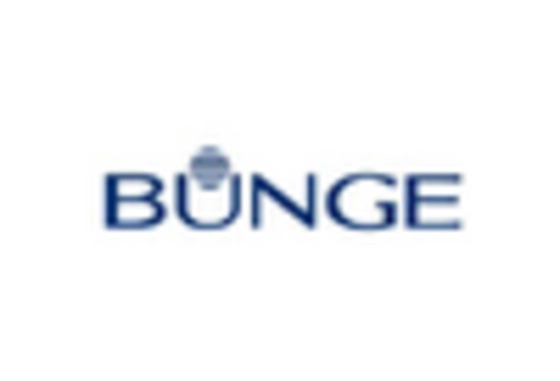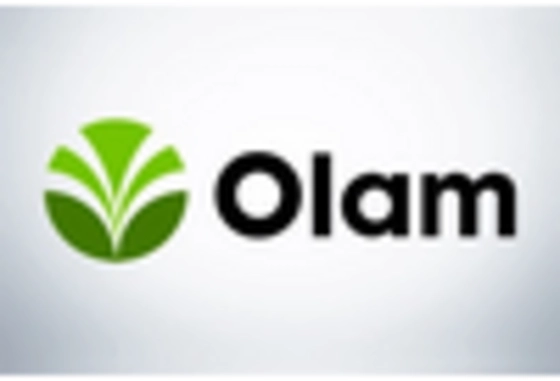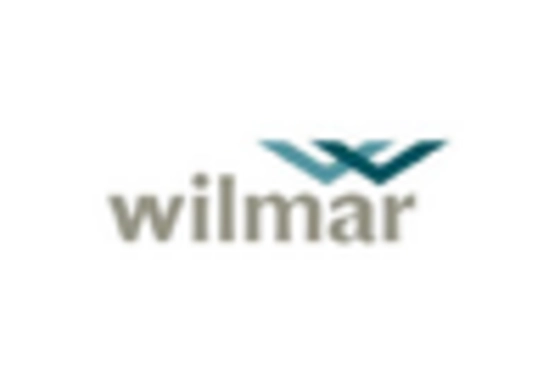Health-Conscious Consumer Trends
The Normal Specialty Fat Market is experiencing a notable shift towards health-conscious formulations. Consumers are increasingly seeking products that align with their dietary preferences, such as low-fat, low-calorie, and plant-based options. This trend is driven by a growing awareness of health issues related to fat consumption, prompting manufacturers to innovate and reformulate their offerings. According to recent data, the demand for healthier fat alternatives has surged, with a projected increase in sales of specialty fats that cater to these preferences. As a result, companies within the Normal Specialty Fat Market are investing in research and development to create products that not only meet health standards but also maintain desirable taste and texture, thereby appealing to a broader consumer base.
Innovation in Culinary Applications
Innovation plays a crucial role in the Normal Specialty Fat Market, particularly in culinary applications. Chefs and food manufacturers are increasingly experimenting with specialty fats to enhance flavor, texture, and overall culinary experience. The versatility of these fats allows for creative applications in various cuisines, from baking to gourmet cooking. Recent market analysis suggests that the introduction of novel specialty fats, such as those derived from unique sources or with specific functional properties, is driving growth in this sector. As culinary trends evolve, the demand for innovative fat solutions is expected to rise, prompting manufacturers to invest in product development and marketing strategies that highlight the unique benefits of their offerings.
Sustainability and Ethical Sourcing
Sustainability has emerged as a pivotal driver within the Normal Specialty Fat Market. Consumers are increasingly concerned about the environmental impact of their food choices, leading to a demand for ethically sourced and sustainable ingredients. This trend is reflected in the growing popularity of specialty fats derived from sustainable agricultural practices. Companies are responding by adopting transparent sourcing strategies and emphasizing their commitment to environmental stewardship. Market data indicates that products labeled as sustainably sourced are witnessing higher sales growth compared to conventional options. This shift not only enhances brand loyalty but also positions companies favorably in a competitive landscape, as consumers are more inclined to support brands that prioritize sustainability.
Regulatory Compliance and Food Safety
Regulatory compliance is a significant driver in the Normal Specialty Fat Market, as food safety standards continue to evolve. Manufacturers are required to adhere to stringent regulations regarding the use of fats in food products, which influences formulation and production processes. Compliance with these regulations not only ensures consumer safety but also enhances product credibility in the marketplace. Recent data indicates that companies that prioritize food safety and transparency are likely to gain a competitive edge. As consumers become more informed about food safety issues, the demand for specialty fats that meet regulatory standards is expected to increase, prompting manufacturers to invest in quality assurance and compliance measures.
Rising Demand for Plant-Based Alternatives
The rising demand for plant-based alternatives is reshaping the Normal Specialty Fat Market. As more consumers adopt vegetarian and vegan diets, the need for specialty fats derived from plant sources is becoming increasingly pronounced. This trend is not only driven by dietary preferences but also by a growing awareness of the environmental impact of animal-based products. Market Research Future indicates that plant-based specialty fats are projected to experience substantial growth, as they offer a viable alternative for consumers seeking healthier and more sustainable options. Manufacturers are responding by developing innovative plant-based fat solutions that cater to this expanding market segment, thereby positioning themselves favorably in a rapidly evolving landscape.

















Leave a Comment